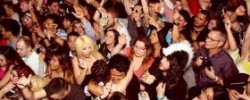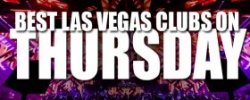 Throughout history there have always been examples of the creative genius that can develop when interesting people come together – think of Bletchley Park in the second world war, for instance, or the Bloomsbury Group. Or of an outsized rave in Milton Keynes called Sidewinder that unwittingly became a cradle for the nascent grime scene.
Throughout history there have always been examples of the creative genius that can develop when interesting people come together – think of Bletchley Park in the second world war, for instance, or the Bloomsbury Group. Or of an outsized rave in Milton Keynes called Sidewinder that unwittingly became a cradle for the nascent grime scene.
Over the last three decades, the foundations for Britain's internationally renowned club culture were built in a handful of sweaty basements, spawning endless new genres. Without these specialist club nights, record stores and pirate radio stations, we would never have had 1992's comedy rave anthem The Bouncer, MCs wouldn't be winning Brit and Mercury prizes and no one would have ever heard of dubstep (so big in the US that Korn claim to have started it).
Here are 10 club nights that changed everything.
1. Wild Bunch at The Dug Out, Bristol
DJ Milo, Nellee Hooper and Daddy G started playing hip-hop, electro and old-school funk at warehouse jams and house parties in Bristol in the mid-80s before moving to The Dug Out. Wild Bunch parties were so good, they were accused of killing the local live music scene, and their bassbins were so powerful you could hear their carnival sets from the other side of town. Like many classic clubs, it attracted a broad demographic: punks and dreads hung out with middle-class students from up the road in Clifton and rudeboys from St Paul's.
Wild Bunch released their hip-hop cover of The Look of Love, changed their name to Massive Attack, and laid the foundations for still-thriving Bristol scenes from trip-hop to a strong local take on jungle and dubstep, through to rising stars such as Julio Bashmore. According to Dug Out regular Goldie (who appears on Sunday's BBC 1Xtra documentary, Classic Clubs): "Wild Bunch are instrumental in the culture of this country, down by law. If it wasn't for Wild Bunch, you wouldn't have had music advance like it did."
2. Soul II Soul at The Africa Centre, London
Jazzie B's soundsystem started playing weddings and christenings, before getting involved with the early-80s London warehouse scene. "The first things I remember about warehouse parties were all around the fashion world but in those days they didn't want the music: all they wanted was my massive soundsystem and some dreads walking up and down the place, " he recalls. "They were very fashion oriented, very gay and absolutely no music. We changed it up a little bit, meaning we started to play our choice of music in those parties." In 1986, the crew took their James Brown records and bomber jacket-clad dancers to the Africa Centre, bringing soundsystem culture into the heart of the West End, and attracting a multiracial crowd at a time when many clubs still operated suspect door policies. The Grammy-winning tunes on Soul II Soul's Club Classics, Vol 1, including Rose Windross's Fairplay, were built and tested during those heady Sunday sessions. One bank holiday, the club was so packed that Jazzie got on the mic and asked the crowd if some of them could leave so people waiting outside could come in. They did.
3. Rock City, Nottingham
It's fair to say a number of venues, particularly in the north, were the first to play house records alongside jazz funk, funk, hip-hop and New York garage in the late 80s, laying the foundations for acid house and everything that followed. Blue plaques should be erected outside the Rock City jazz funk all-dayers in Nottingham, Rock Da House in Manchester, 20th Century Club in Derby, Warehouse in Leeds and probably others too, including the Hewan Clarke and the Nude nights at the Hacienda. House was initially interpreted as an extension of northern soul and attracted excellent dance crews including Foot Patrol, as well as the likes of a young Guy Called Gerald.
4. Labyrinth at the Four Aces, Dalston
Back in the late 80s, flyers were the best way to publicise club nights and were accordingly eye-catching – on occasion, even printed on flexidiscs. Labyrinth's featured a cartoon strip about a superhero who could rave for 96 hours without stopping, which seemed possible given the club's winding corridors, passageways and interconnected rooms as well as "a garden that acted as an excellent chillout room and refuge from the mayhem, " as it is described on the Fantazia Rave Archive site.
Labyrinth was home to a legendary hardcore and early jungle club and the Prodigy's first live show. The club itself was also influential: founded in 1966, it was the first in the UK to feature a "West Indian soundsystem" and hosted gigs by everyone from Desmond Dekker to Jah Shaka. As well as a colossal amount of raving.
5. Rage at Heaven, Charing Cross
Rage started in late 1989, taking over Thursday nights at London's first purpose-built gay club, under Charing Cross station. Initially, DJs Fabio and Grooverider were tucked away upstairs in the Star Bar but their mix of European rave records, dark breakbeats, US house and the homegrown UK music being made by acts such as LFO and Shut Up and Dance meant they were soon moved to the main stage at the 2, 000-capacity club. The club, and the afterhours parties at Nutters in Brixton, became the spiritual birthplace of jungle, and saw the reggae tradition of cutting dubplates adopted by this new generation of ravers. Thanks to further technological innovation – such as the development of DAT recorders, as well as the Akai S1000 sampler, which allowed time-stretching – more people could make their own records, making this year zero for homegrown UK sounds such as 4 Hero's hardcore classic Mr Kirk's Nightmare.
Dedicated Rage heads included many who went on to be top boys in drum'n'bass including Goldie, who was so inspired by the night he used it as his blueprint for Metalheadz. By around 1994, clubs such as AWOL and Roast had taken the ideas generated at Rage, and at huge mega-raves such as Telepathy, and refined them into jungle.










